Rainbow shark: Tank size, tank mates, Guide
Rainbow Shark
Rainbow Sharks, also
known as RedFin Sharks or Ruby Sharks, are small tropical freshwater fish
native to Thailand.
They are
known for their vibrant red fins and being territorial.
- If you’re looking to add some color and attitude to your aquarium this may just be the fish for you.
- In this article, we will discuss how to care for them, dietary needs, tank mates/compatibility,
- breeding and much more.
Let’s start
with a quick summary before we move on to discuss their appearance and
compatibility with other fish.
Overview of Rainbow Shark
The Rainbow Shark is a tropical fish cyprinid that is somewhat difficult to keep.
It would be suitable for fish keepers who
have a few years of experience and are looking to expand their aquarium.
They are known for their territorial nature and
bright vibrant red fins.
Originating from the warm rivers of Southeast
Asia, they were given the affectionate common name of Rainbow Shark,
due to
their upright dorsal fin which gives them the appearance of a shark.
You should expect your Rainbow Shark to grow up
to 6 inches in length and have a lifespan of 5-8 years.
In terms of cost, you should be looking to spend
no more than $3 per fish, and they are readily available all year round.
If you do intend to keep Rainbow Sharks you
should make sure your aquarium has plenty of hiding places for them as this
helps to reduce their territorial behavior.
Rainbow Sharks’ Appearance
- The Rainbow Shark is a dark gray fish with vibrant red/orange fins.
- They have a long, flat stomach with a pointed snout and an upright dorsal fin. It’s this fin that gives them the appearance of a shark.
- The Rainbow Shark is a small fish that you should expect to grow up to around 6'' inches.
It is not
possible to identify their gender whilst they are juveniles. You have to wait
until they are sexually matured.
Once sexually
matured females will have thicker bodies, and males will develop small black
lines on the tail fin.
Whilst males will be thinner, they will generally have
brighter colorations.
A common
variety of the Rainbow Shark is the Albino Rainbow Shark.
Whilst the
Albino Rainbow Shark maintains the red/orange fins, its body is white.
It will
grow to a similar size as a traditional Rainbow Shark and matches several of
theirs.
Rainbow Shark Fish Tank size:
An adult rainbow
shark needs a minimum of 30 gallons of water for life.
With a PH rate between 6.0 to 8.0.
they need big space because of their all-time swim so fast all over the tank.
It's
their nature. That’s why they need a big space. Otherwise, they are not growing properly.
Now someone can say why they need that much of space
cause they quit small size in body size.
Look I said the cause they all-time
swim fastly all over the tank. They are like little child play all the time.
If you don’t give proper space and proper environment for
any kind of fish they never cant live long they soo die fast.
And if you really love fish keeping
you have to give them the proper environment.
It's not like you keep for show people and your mind wants to keep or pet some fishes that’s why you keep.
I hope you guys understand what I mean.
So please be
care full about the fish tank size and environment. It's like you have to give
them enough space.
where they don’t feel that, that they are in a home
where you lock them in jail.
They have to feel your tank like an ocean.
If it's possible
then grow fastly and give eggs and produce a baby. That’s a really very very happy
moment for a fish keeper. Right!!
Compatibility and Tankmates
Let me
preface this section by stating if you are looking for a calm community fish,
the Rainbow Shark might not be the fish for you.
Whilst they
will get along with many other freshwater fish species,
they are very
territorial and this can be overwhelming for more shy species, such as Marbled
hatchet fish and Otocinclus catfish.
As mentioned
in the aquarium and habitat section above, they like to take possession of an
area of the aquarium; generally the small caves and rocks.
We sympathize
with any fish that stumbles upon a Rainbow Shark’s territory!
They will be
extremely aggressive and chase the intruders away.
Due to their
aggression, you need to be careful when choosing tank mates.
As a general rule they aren’t aggressive towards species that don’t look like Rainbow
Sharks.
As the Rainbow Shark dwells at the bottom of the aquarium, avoid other bottom-dwelling fish such as cichlids and catfish.
You should also avoid any similar-looking fish, i.e. Red Tail Sharks and Bala Sharks.
As the Rainbow Shark dwells at the bottom of the aquarium, avoid other bottom-dwelling fish such as cichlids and catfish.
You should also avoid any similar-looking fish, i.e. Red Tail Sharks and Bala Sharks.
When
selecting tank mates, look for those fish that dwell in the middle and upper
levels of the aquarium.
Don't pet them with the parrot fish:
Blood parrot is very aggressive and because of they are big size fish so they can eat rainbow shark sometime. its very true happen.
so I suggest you don't do that don't leave rainbow shark and parrotfish in the same tank
so I suggest you don't do that don't leave rainbow shark and parrotfish in the same tank
You also want
to pick fish that can defend themselves and have a calm but strong personality.
Species such as Gouramis, Barbs, Danios, and Rainbowfish are all compatible with Rainbow Sharks.
Species such as Gouramis, Barbs, Danios, and Rainbowfish are all compatible with Rainbow Sharks.
Finally, a
little compatibility trick you can use is: make sure the Rainbow Shark is the
last fish placed in your aquarium.
This will prevent it from trying to claim the entire aquarium as its own and should reduce territory problems.
This will prevent it from trying to claim the entire aquarium as its own and should reduce territory problems.
Keeping Rainbow Sharks with other Rainbow Shark
As a general
rule it’s recommended that you only keep one Rainbow Shark in an aquarium at
any time.
should also be added to this rule.
Rainbow Sharks will not tolerate living with
its own kind.
In the wild
they generally lead a solitary lifestyle and are very territorial.
In a normal aquarium, there just isn’t enough space and the larger Rainbow Shark will chase the smaller Rainbow Sharks relentlessly until it kills them.
In a normal aquarium, there just isn’t enough space and the larger Rainbow Shark will chase the smaller Rainbow Sharks relentlessly until it kills them.
This
territorial nature develops with age, so if you get two juvenile Rainbow Sharks
they could very well start out getting along,
but their relationship will
decline rapidly as they mature.
If you insist
on keeping more than one Rainbow Shark follow these guidelines:
§ You should keep a group
of them (5 or more). This way the dominant Rainbow Shark has multiple fish to
chase.
§ Never keep just two
Rainbow Sharks.
§ If you intend to
introduce more than one Rainbow Shark make sure each has at least a meter of
separated territory.
Diet and Feeding Requirements
As mentioned
during the overview, Rainbow Sharks are Omnivores which means they eat both
plants and meat.
In the wild
they generally consume decaying plants, algae, insect larvae, and small chunks
of meat, they find in the river such as
They aren’t fussy
eaters and will consume most things; providing it sinks to the bottom of the
tank!
This is good
news if you plan to keep Rainbow Sharks in aquariums.
They will eat flake food,
frozen food, pellets, vegetables and live food with no complaints.
You should
aim to keep their diet varied and feed them a variety of food sources,
similar
to what they would eat in the wild.
For instance: algae (tablets or wafers), insect larvae, crustaceans (frozen or live), and zooplankton.
To keep their diet varied you can also offer them plenty of vegetables such as spinach,
For instance: algae (tablets or wafers), insect larvae, crustaceans (frozen or live), and zooplankton.
To keep their diet varied you can also offer them plenty of vegetables such as spinach,
lettuce,
zucchini and peas; this will keep their immune system strong.
If you want
to make sure their red/orange color is a vibrant shade,
regular meals of life
and frozen meat should be given to them frozen bloodworms and brine shrimp
will be fine.
This is even
more important for juvenile Rainbow Sharks. If you want your juveniles to grow
large with vibrant colors,
make sure their diet is varied and never overly restricted. Lack of variation can cause stunted growth and poor color expression.
make sure their diet is varied and never overly restricted. Lack of variation can cause stunted growth and poor color expression.
The total length of feeding time should be around 5 minutes.
If food is left after this time, you are feeding them too much and it will impact you.
and it also will be the cause of ammonia in the water which is very dangerous for every type of fish.
and it's also a sign of overfeeding. be careful about that cause if your fishes are overfed they cant swim easily and properly and
they have a risk for falling in diseases and it can take your fish to the die
 |
| Overfeeding Rainbowfish |
Behavior
Rainbow Sharks
are a pretty active breed and enjoy swimming,
so you should seek to house yours
in a tank that is large enough for it to move around comfortably (more on that
later).
- Although they may approach the middle and top of the tank – occasionally even jumping
- they are primarily bottom dwellers and spend much of their time hanging around the aquarium floor.
As bottom feeders, these fish feast on algae and food left
behind by other breeds,
which makes them a popular choice of tank cleaner among
experienced aquarists.
These fish aren’t the most aggressive breed in the underwater
world, but they aren’t the most peaceful either.
Generally speaking, they can be housed in a community aquarium
if the other fish in the tank spend their time towards the top of the water.
When they encounter other bottom dwellers, they may become
territorial and aggressive and attempt to assert their dominance through
chasing and biting.
Keeping more than one male Rainbow Shark in a tank is asking for
trouble as males in the species are particularly aggressive towards each other.
and will almost certainly disturb their more peaceful tankmates with their fighting.
Rainbow Shark Breeding
In the wild,
Rainbow Shark’s tend to mate, which is when they also reach their sexual
maturity.
However, the exact month can be impacted by changing seasons and depends on the length of the day and temperature.
However, the exact month can be impacted by changing seasons and depends on the length of the day and temperature.
Rainbow
Sharks reproduce through egg-laying.
The female will lay eggs and the male will
then fertilize them by spraying the eggs with his milt.
From here the eggs will hatch within the week.
From here the eggs will hatch within the week.
Unfortunately
though breeding Rainbow Sharks in an aquarium is extremely challenging and we
are yet to hear of any success stories.
Again, this
is more than likely because of their aggressive and territorial nature in
confined settings.
"please comment below if you have any problem. or if you have any queries. I will fix and reply to you as soon as possible."
HAPPY FISH KEEPING

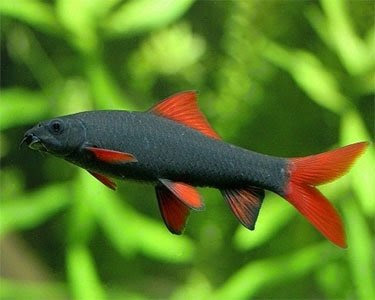
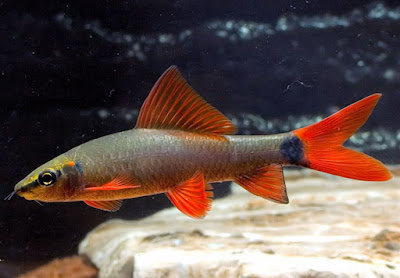
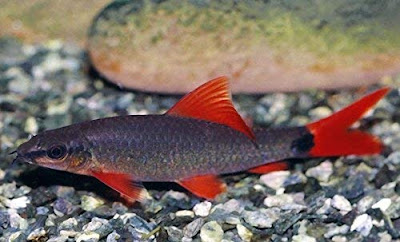
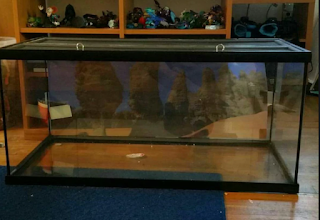

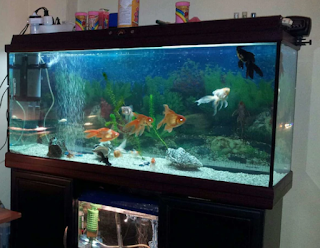
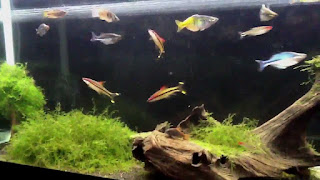


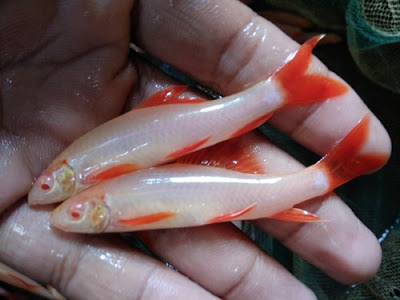

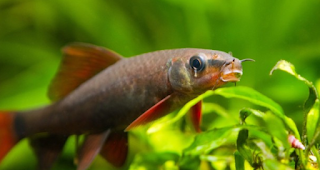
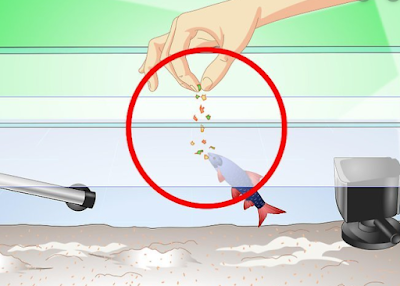
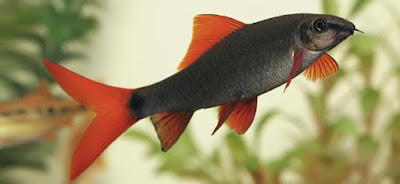
Post a Comment